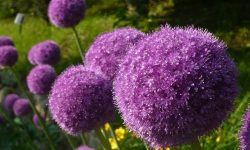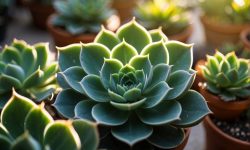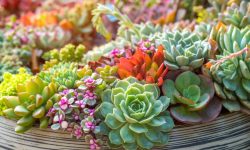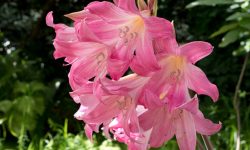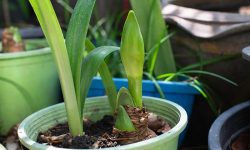The jade plant, also known as Crassula ovata, is a beloved succulent that’s easy to propagate and grow, especially from stem cuttings. Whether you’re new to gardening or an experienced plant enthusiast, growing a jade plant from a cutting offers a satisfying and rewarding experience. With the right care and proper steps, you can watch a small piece of jade develop into a thriving, lush plant.
This complete guide explores every detail you need to know to grow a jade plant from a cutting successfully, from selecting the right stem to encouraging healthy root development, transplanting, and ongoing care.
Understanding Jade Plant Cuttings
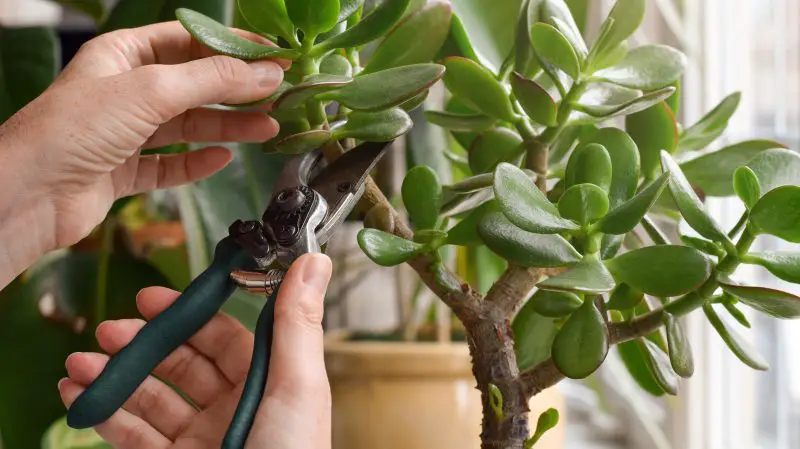
Jade plants are naturally resilient and capable of growing from a single leaf or stem. However, using a stem cutting gives you a quicker and more reliable propagation method. The stem not only contains nodes necessary for root growth but also allows the plant to establish more robustly after transplantation.
When propagated properly, jade plant cuttings mimic the characteristics of their parent plant. These succulents produce thick, fleshy leaves that store water, making them drought-tolerant and ideal for indoor or outdoor settings. The cuttings you choose should be mature, healthy, and at least a few inches long to ensure they root effectively.
Selecting the Best Cutting for Propagation
Healthy cuttings are essential to a successful propagation process. Begin by choosing a jade plant that exhibits strong, upright growth with no signs of disease, pests, or rot. The ideal cutting is a firm stem that holds plump leaves and shows no discoloration.
Use sterilized, sharp pruning shears to make a clean cut just below a node, which is the joint from which new roots and growth can develop. Avoid using stems that appear soft or woody, as they may have a harder time rooting. Letting the cutting dry before planting is a crucial step that helps prevent rotting in the soil.
Allowing the Cutting to Callus
After cutting, jade stems should not be placed directly into soil. Instead, they require a callusing period. This means letting the cut end dry and form a protective barrier. Lay the cutting in a dry, shaded spot at room temperature and allow it to rest for a few days up to a week.
This drying phase is important because succulents like jade plants are prone to rotting if moisture enters the open wound too quickly. Once the cut edge feels dry to the touch and has formed a slight crust or callus, it is safe to move on to the next step: planting in soil.
Choosing the Right Soil for Rooting
Soil selection plays a vital role in ensuring jade plant cuttings grow successfully. Jade plants thrive in fast-draining, gritty soil that prevents moisture buildup around the roots. A cactus or succulent mix is ideal, as it replicates their native arid environment.
If you prefer to mix your own, a combination of regular potting soil with sand or perlite added will provide the drainage needed. The soil should remain slightly dry and never compact, which encourages new roots to reach for moisture and develop properly.
Planting the Cutting in Soil
Once the cutting is callused and the soil is prepared, gently insert the dried stem into the center of a small pot filled with succulent mix. Push the stem about an inch deep to anchor it upright, and lightly press the soil around the base to hold it steady.
Avoid watering immediately after planting. Allow the soil to remain dry for a few days to let the roots begin forming in a controlled environment. Overwatering at this early stage is one of the main causes of failure in jade plant propagation.
Providing the Ideal Conditions for Root Development
To encourage strong root growth, the newly planted jade cutting should be placed in a warm, bright location with indirect sunlight. While the plant needs light for energy, direct sun exposure during this early stage can cause stress or sunburn on the tender cutting.
Temperature is another factor to consider. Jade plants root best in temperatures between 65°F and 75°F (18°C to 24°C). Cold or drafty areas should be avoided, as lower temperatures can delay or prevent root development altogether.
Watering After the Roots Begin to Form
After about a week or two, the cutting may begin forming roots. You can test this by gently tugging on the stem; if there is resistance, roots are likely developing. At this point, you can introduce watering gradually.
Use a small amount of water to moisten the top layer of soil, but avoid soaking it. As roots strengthen, you can increase the watering frequency slightly, allowing the soil to dry out completely between waterings. Jade plants prefer drought-like conditions, and too much moisture can lead to root rot.
Watching for New Growth and Leaf Formation
Signs of successful propagation will soon become visible in the form of new leaves forming near the top or sides of the cutting. This is a good indication that the root system is established and the plant is drawing nutrients and moisture from the soil.
As new growth appears, you can shift the plant to an area with more direct sunlight. Jade plants appreciate at least four hours of light daily, especially when transitioning from rooting to active growth. If grown indoors, placing the plant near a sunny windowsill will provide optimal lighting conditions.
Transplanting to a Larger Pot
Once the jade plant has filled its initial container with roots and is showing consistent growth, it’s time to consider transplanting. A larger pot provides space for further development and prevents the plant from becoming root-bound.
Select a pot that is one size larger, preferably with drainage holes to support the jade plant’s water needs. Use fresh succulent soil during repotting to ensure good aeration and drainage. Gently remove the plant from its current pot, keeping the root ball intact, and place it into the new container.
Fertilizing for Enhanced Growth
While jade plants don’t require frequent fertilization, giving your newly rooted plant a light boost can encourage more vigorous growth. After a few months of stable development, apply a diluted succulent fertilizer during the growing season, which typically spans from spring to early fall.
Fertilizing once every two to three months with a balanced formula provides the plant with nutrients to support leaf production and overall health. Avoid fertilizing during the winter months when the plant enters a natural dormancy.
Common Problems and How to Prevent Them
Growing jade from cuttings is generally straightforward, but problems may arise if conditions are not ideal. One of the most common issues is stem rot, usually caused by excess moisture. Ensuring your soil drains well and avoiding overwatering can prevent this.
Another potential challenge is leaf drop, which may occur when the plant is exposed to sudden temperature changes or insufficient light. Moving the jade to a more stable environment and ensuring adequate sunlight will often resolve this problem.
Pest infestations, though rare, can affect jade plants. Keep an eye out for mealybugs or spider mites, which can be treated with neem oil or insecticidal soap. Healthy jade plants propagated under clean conditions are generally resilient and long-lived.
Best Time of Year to Take Cuttings
Jade cuttings root best during the warmer months of the year, particularly in spring or early summer. During this period, the plant is in its active growth phase, and both roots and leaves develop more quickly.
Avoid taking cuttings in winter, when the jade plant enters dormancy and is less likely to respond well to propagation efforts. Warmer temperatures and increased light during spring and summer help trigger faster root development and healthier growth.
Encouraging a Bushy Growth Habit
Once your jade plant is established, you can begin shaping it for a fuller, bushier look. Pinching back the top growth encourages lateral branching, which gives the plant a more compact and balanced appearance.
Pruning is best done in the spring, using clean scissors to trim just above a leaf node. This encourages multiple new shoots to emerge from a single stem, resulting in a fuller, more attractive plant. Regular shaping and pinching help maintain size and promote a stronger, more stable structure.
Growing Jade Plants Outdoors vs Indoors
Jade plants adapt well to both indoor and outdoor environments, though care requirements vary slightly depending on location. Indoors, jade prefers bright windows with several hours of sunlight daily and well-controlled temperatures.
Outdoors, jade plants thrive in warm, arid climates within USDA Zones 10–11. They can be placed on patios or in garden beds with plenty of light. In colder zones, jade should be kept in pots so they can be brought indoors during the winter months. Protecting the plant from frost is crucial, as jade is not cold-hardy.
Lifespan and Growth Expectations
When properly cared for, jade plants can live for decades, often becoming heirloom plants passed down through generations. They grow slowly, especially during the first year after propagation, but with patience, they can reach impressive sizes.
In ideal conditions, jade plants may grow up to three feet tall or more indoors, with even larger specimens possible in outdoor environments. Regular pruning and correct care keep the plant healthy and manageable, allowing it to thrive year after year.
Environmental Benefits of Jade Plants
Beyond their visual appeal, jade plants provide several benefits to indoor spaces. Like many succulents, they help purify the air by absorbing carbon dioxide and releasing oxygen. Their thick leaves also reduce indoor humidity, creating a more comfortable living environment.
Many people believe jade plants bring prosperity and good luck, making them a popular gift and decorative item in homes and offices. Their low-maintenance nature and elegant growth make them ideal for both beginners and experienced gardeners.
FAQs About Growing Jade Plants from Cuttings
How long does it take for a jade plant cutting to root?
Rooting typically begins within 2 to 3 weeks, depending on the temperature, light, and soil conditions.
Can jade plant cuttings root in water?
While jade plants can technically root in water, they are more prone to rot. Rooting in soil is generally safer and more effective for succulents.
Should I use rooting hormone on jade cuttings?
Rooting hormone is optional but can speed up the rooting process. However, jade cuttings usually root successfully without it.
How do I know if my jade cutting is healthy?
A healthy cutting is firm, not wrinkled, and free from rot or blackened areas. Once roots form, you’ll notice new leaf growth.
What should I do if the cutting doesn’t root?
Check for signs of rot or poor soil drainage. Try using a fresh cutting, ensure proper air circulation, and allow enough drying time before replanting.
Conclusion: Growing Jade Plant from Cutting is Easier Than You Think
Starting a jade plant from a cutting is a simple, cost-effective way to grow your own succulent collection. By choosing a healthy stem, allowing it to callus, planting it in well-draining soil, and providing the right environmental conditions, you can successfully propagate and grow a thriving jade plant.
With just a bit of patience and care, your small jade cutting will transform into a beautiful, mature plant that continues to grow and delight for years to come.

